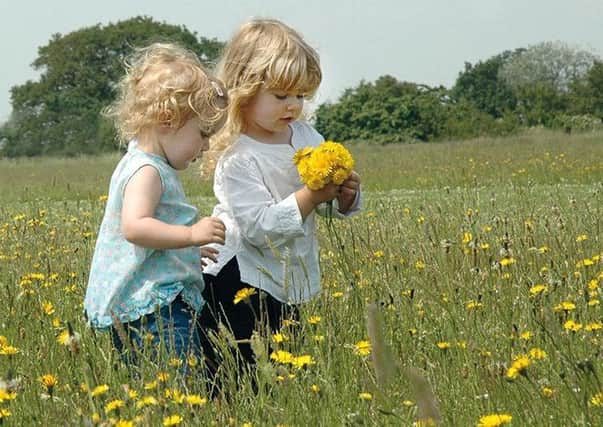Ilona Amos: Show you love the planet '“ and your mum '“ with wild flowers


Just as I had enjoyed the hunt, my mother seemed delighted with all my straggly, wilted offerings – which had usually suffered from the journey home, clutched in my excited little fist. She would stick them in her favourite jug and display it on the windowsill. Other times we would select the heftiest books in the shelf and press some of the more delicate flowers – wood sorrel, celandines, lady’s smock, dog violets and the like – amongst their pages to preserve them for posterity.
Other games included making daisy chains and “soup” with my cousins, or holding a buttercup under each other’s chins to find out who liked butter – I always did.
Advertisement
Hide AdAdvertisement
Hide AdBefore anyone sends round the plant police, I can assure you I gave up my amateur flower collecting efforts when I realised my actions could have unintended consequences for the environment. And also because I was under the impression it was actually illegal – though apparently it’s not, unless the plants are specifically protected because of their rarity. Or if you’re targeting cultivated specimens such as daffodils and crocuses in public parks and gardens, then it’s plain stealing.
Picking local flowers and learning their names was part of growing up for me and, along with activities such as collecting frog spawn, helped develop an interest in nature and concern for the environment. I’m trying to do the same for my own children, with trips out to pick wild brambles, chanterelles and even elderberries (I admit the plan here was to make wine, but the kids didn’t need to know that).
When it comes to wild flowers, however, I have generally advised the “look but don’t touch” approach. It’s a small sacrifice for me to miss out on the floral gifts my mother enjoyed, but perhaps my offspring are the ones losing out.
According to environmental charity Plantlife, picking flowers and associated activities such as creating your own herbarium or making perfume (yup, I tried that too) helps people connect with the natural world. With that in mind, conservationists have created a new code of conduct for would-be botanists and a “safe” list of wild flowers that can be picked without damaging populations.
It’s usually safe to pick the four Fs – fruit, foliage, flowers and fungi – without fear of the law, as long as you don’t take up plants by the roots or from private land without permission. But Plantlife has identified 12 common species that can be plucked across the UK without guilt, as long as you only take one in 20 blooms. They are: daisy, dandelion, primrose, dog violet, greater stitchwort, cow parsley, buttercup, red campion, oxeye daisy, yarrow, common knapweed, and meadowsweet.
I think I’ve picked them all at one time or another, although I didn’t know some of their names. I do now, though, and will be passing on the intel to the sprogs along with the green light to harvest a few select stems – strictly for educational purposes and tokens of love.
Budding (sorry) plant scientists can also take part in the charity’s Great British Wildflower Hunt, which runs until the summer. Details are available at www.plantlife.org.